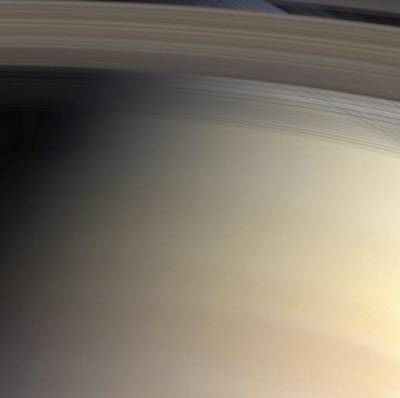sexta-feira, 17 de setembro de 2004
_____________________________________________________________________
Correio da Cassini
Será esta uma das charneiras entre o belo e o sublime?

Saturn's faintly banded atmosphere is delicately colored and its threadbare rings cross their own shadows in this marvelous natural color view from Cassini.
The planet and its rings would nearly fill the space between Earth and the Moon. Yet, despite their great breadth, the rings are a few meters thick and in some places, very translucent. In this image, we can see through the C ring, which is closest to Saturn, and through the Cassini division, the 4,800-kilometer- (2,980-mile-) wide gap that arcs across the top of the image and separates the optically thick B ring from the A ring. The part of the atmosphere seen through the gap appears darker and more bluish due to scattering at blue wavelengths by the cloud-free upper atmosphere.
Correio da Cassini
Será esta uma das charneiras entre o belo e o sublime?

Saturn's faintly banded atmosphere is delicately colored and its threadbare rings cross their own shadows in this marvelous natural color view from Cassini.
The planet and its rings would nearly fill the space between Earth and the Moon. Yet, despite their great breadth, the rings are a few meters thick and in some places, very translucent. In this image, we can see through the C ring, which is closest to Saturn, and through the Cassini division, the 4,800-kilometer- (2,980-mile-) wide gap that arcs across the top of the image and separates the optically thick B ring from the A ring. The part of the atmosphere seen through the gap appears darker and more bluish due to scattering at blue wavelengths by the cloud-free upper atmosphere.

